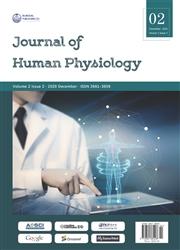Are Plasma ST2 and Galectin-3 Predictors for Clinical Outcomes After Myectomy in Patients With Obstructive Hypertrophic Cardiomyopathy?
引用次数: 0
Abstract
ST2 is a member of the interleukin-1 receptor family, which is expressed in a trans membrane form (ST2L) as well as in a soluble secreted form [1]. Recently, soluble ST2(sST2) was found to be elevated in patients with chronic heart failure with reduced ejection fraction (HFrEF) and regarded as a promising novel biomarkers that can improve risk stratification [2, 3]. In 2012, Broch K et al. showed that baseline sST2 was associated with death due to worsening heart failure (HF), hospitalization due to worsening HF, and all cardiovascular hospitalization in older patients with ischemic HF[4]. In a multicenter study enrolled 447 patients with acutely decompensated heart failure, sST2 was an independent predictor of mortality for 1 year follow-up, regardless of the left ventricular ejection fraction[5]. As a β-galactoside-binding lectin secreted by activated macrophages, galectin-3 (Gal-3) exists in the cytoplasm and in a secreted form, and is involved in several physiological and pathological processes that contribute to HF, including myocardial fibrosis, inflammation and cardiac remodeling [6-8]. Sub study of RELAX trial suggested that Gal-3 levels were associated with severity of renal dysfunction. De Boer et al. found that Gal-3 is an independent marker for composite end of all-cause mortality and HF hospitalization in HF and appears to be more powerful in patients with heart failure with preserved ejection fraction (HFpEF)[9]. According to results from the Aldo-DHF trial, plasma Gal-3 in HFpEF was associated with adverse outcome, independent of treatment or NT-proBNP [10].血浆ST2和半乳糖凝集素-3是否能预测梗阻性肥厚型心肌病患者骨髓切除术后的临床结果?
ST2是白细胞介素-1受体家族的成员,以跨膜形式(ST2L)和可溶性分泌形式表达[1]。最近,发现可溶性ST2(sST2)在射血分数降低的慢性心力衰竭(HFrEF)患者中升高,并被视为一种有前途的新型生物标志物,可以改善风险分层[2,3]。2012年,Broch K等人表明,基线sST2与心力衰竭(HF)恶化导致的死亡、HF恶化导致的住院以及老年缺血性HF患者的所有心血管住院有关[4]。在一项纳入447名急性失代偿性心力衰竭患者的多中心研究中,无论左心室射血分数如何,sST2都是1年随访死亡率的独立预测指标[5]。半乳糖凝集素-3(Gal-3)作为一种由活化巨噬细胞分泌的β-半乳糖苷结合凝集素,以分泌形式存在于细胞质中,并参与导致HF的几个生理和病理过程,包括心肌纤维化、炎症和心脏重塑[6-8]。RELAX试验的子研究表明,Gal-3水平与肾功能障碍的严重程度有关。De Boer等人发现,Gal-3是HF中全因死亡率和HF住院综合终点的独立标志物,在射血分数(HFpEF)保持的心力衰竭患者中似乎更有效[9]。根据Aldo DHF试验的结果,HFpEF中的血浆Gal-3与不良结果相关,与治疗或NT-proBNP无关[10]。
本文章由计算机程序翻译,如有差异,请以英文原文为准。
求助全文
约1分钟内获得全文
求助全文

 求助内容:
求助内容: 应助结果提醒方式:
应助结果提醒方式:


